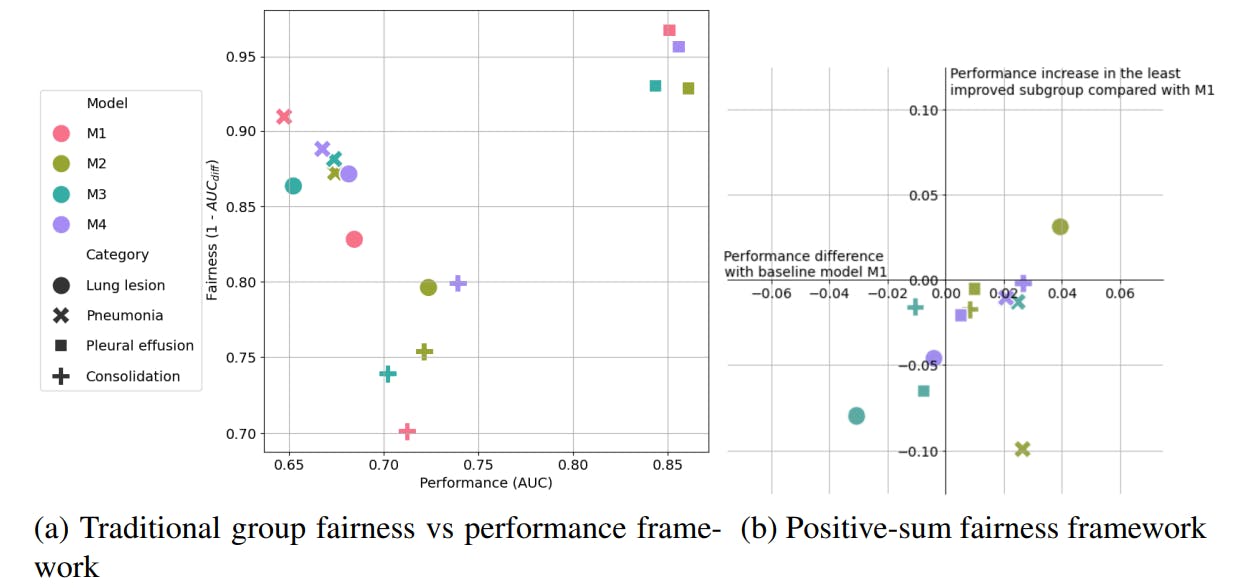Table of Links
-
Methods
4.2 Positive-sum fairness

Any classifier which has the exact same overall performance and exact same performance per protected subgroup (race) as the baseline, would be at coordinate (0,0). Any classifier that has a negative x-coordinate, would have a lower general performance than M1 and any classifier that has a negative y-coordinate would have at least one protected subgroup with a lower AUROC than M1 (at least one subgroup negatively impacted by the changes brought to the baseline model).
For lung lesions, figure 3b shows that M2 appears in the positive side of the x and y axes, meaning that the performance was improved without harming any subgroup’s performance. And this even though the figure 3a shows a decrease in fairness (larger disparity between the most advantaged and least advantaged subgroups) for M2 compared with M1. This matches the previous conclusion that the larger performance gap

between protected subgroups for M2 compared with M1 cannot be considered harmful as every protected subgroup’s performance was individually increased.
On the other hand, for lung lesions, model M4 improved fairness (smaller disparity between the most advantaged and least advantaged subgroups) as shown in the figure 3a. However, the figure 3b, shows that M4 has negative y coordinates, meaning that at least one subgroup was harmed while trying to achieve a smaller disparity between protected subgroups.
Authors:
(1) Samia Belhadj∗, Lunit Inc., Seoul, Republic of Korea ([email protected]);
(2) Sanguk Park [0009 −0005 −0538 −5522]*, Lunit Inc., Seoul, Republic of Korea ([email protected]);
(3) Ambika Seth, Lunit Inc., Seoul, Republic of Korea ([email protected]);
(4) Hesham Dar [0009 −0003 −6458 −2097], Lunit Inc., Seoul, Republic of Korea ([email protected]);
(5) Thijs Kooi [0009 −0003 −6458 −2097], Kooi, Lunit Inc., Seoul, Republic of Korea ([email protected]).
This paper is available on arxiv under CC BY-NC-SA 4.0 license.

